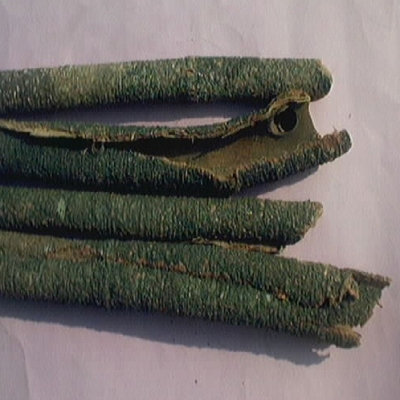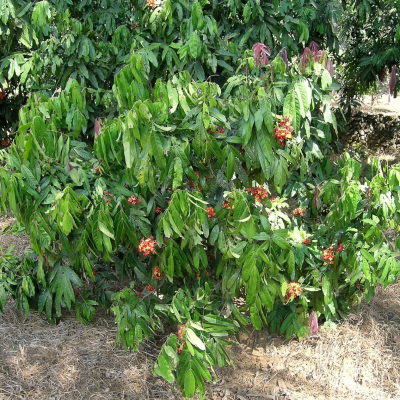Saraca asoca (Roxb.) de Wilde
Synonyms : Saraca indica auct.Non Linn.
Family : Fabaceae
Group : Uterine tonic
Parts Used : Leaf , Seed , Bark , Flower
Vernacular Names :-
| English | : | Ashoka |
| Malayalam | : | Asokam |
| Hindi | : | Asoka |
| Sanskrit | : | Asoka |
| Assamese | : | Asoka |
| Bengali | : | Asoka |
| Gujarathi | : | Ashopalava |
| Kannada | : | Asokada |
| Tamil | : | Asogam |
| Telungu | : | Asokamu |
Distribution and habitat: Throughout India, except North-Western India, up to 750 m. It is also found in the Andaman Islands.
Botany: Medium sized evergreen tree growing up to 9 m height with numerous spreading and drooping glabrous branches. The bark is dark brown to grey or black with a warty surface. The thickness varies from 5 mm to 10 mm. The entire cut surface turns reddish on exposure to air.
- Leaves : Paripinnate, 30-60 cm long having 2-3 pairs of lanceolate leaflets.
- Flowers : Orange or orange yellow, arranged in dense corymbs and very fragrant.
- Fruits : Flat black pods, leathery and compressed with 4-8 seeds per pod.
- Seeds: Ellipsoid oblong and compressed.
Chemical constituents: Flowers give b-sitosterol, flavonoids and flavone glycosides-quercetin, kaempferol-3-O-b-D-glucoside, quercetin-3-O-b-D-glucoside. The anthocyanins present are pelargonidin-3, 5-diglucoside and cyanadin-3, 5-diglucoside. Bark yields catechol and sterols-(24x)-24-methyl cholest-5-en-3b-ol, (22E, 21x)-24-ethylcholesta-5, 22-dien-3 b-ol and (24x)-24-ethyl cholest-5-en-3b-ol, a wax containing n-alkanes, esters and free primary alcohols.
Uses:
- Aerial part is hypothermic, neurotonic and diuretic.
- The bark is useful in dyspepsia, fever, dipsia, burning sensation, visceromegaly, colic, ulcers, menorrhagia, metropathy, leucorrhoea and pimples.
- Seed is antifungal.
- Flower is uterine tonic, antidiabetic and antisyphilitic. Stem bark and flower is antibilious
- The flowers are considered to be uterine tonic and are used in vitiated conditions of pitta, syphilis, cervical adinitis, hyperdipsia, burning sensation, haemorrhoids, dysentery, scabies in children and inflammation.
Formulations: ‘Ashokarishta’ and ‘Ashokaghrita’. Ashokarishta is prescribed in leucorrhoea, haematuria, menorrhagia and other diseases of genitourinary system of females.
Agrotechnology
Soil and climate: Ashoka grows well in areas with well distributed rainfall and in slightly shady areas. It requires soil rich in organic matter and moisture.
Propagation: By seeds. Seeds are formed usually during February-April and collected when they are ripe and fall down. Sown after soaking in water for 12 hours on the prepared beds. Seeds germinate within 20 days. 2-month-old seedlings from the polybags are used for transplanting at 3 m spacing.
Harvesting: If properly cultivated, it can be cut after 20 years and the bark collected. Cut at a height of 15 cm from the soil level. If given irrigation and fertilizers, the cut wood will sprout again and can be harvested again. This can be continued. When it is difficult to cut the tree, the bark can be peeled off from one side first. When the bark grows and cover that part, the other side can be peeled off.


